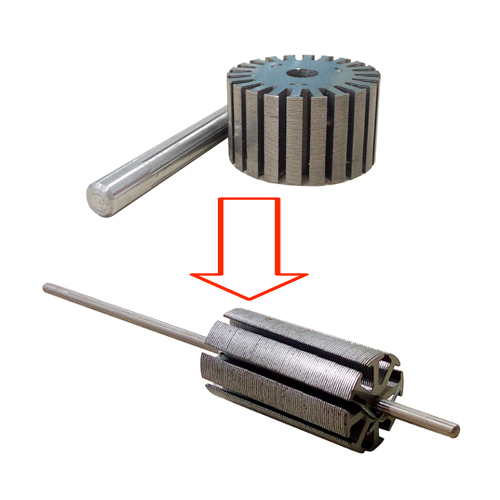10kV power cable common faults and treatment methods
1, fault type
The cable fault can be summarized as three types of grounding, short circuit, and broken wire. The types of faults are mainly the following:
(1) Flashover failure.
The cable is in good insulation at low voltage and there is no fault. As long as the voltage value rises to a certain range, or a certain voltage continues to rise after a certain period of time, it will instantly breakdown the insulator, causing flashover fault.
(2) One-phase core disconnection or polyphase disconnection.
In the continuous test of cable conductors, the insulation resistance of each conductor of the cable is in accordance with the relevant regulations. However, if one or more phases are found to be inconsistent during the inspection, then one-phase core wire breakage or multi-phase breakage is indicated.
(3) Three-core cable is grounded with one or two cores.
One-core or two-core conductors of a three-core cable are tested to be discontinuous using an insulating rocker, and then a one-core or two-core insulation resistance telemetry is performed on the ground. If the insulation resistance between the core and the core is much lower than the normal value, this insulation resistance value higher than 1000 ohms is called a high resistance ground fault; otherwise, it is a low resistance ground fault. Both of these faults are called disconnection and ground faults.
(4) Three-phase core short circuit.
The magnitude of the grounding resistance in the short circuit is the basis for judging the short circuit fault of the three-phase core wire of the cable. There are two types of short-circuit faults: low-impedance short-circuit faults and high-impedance short-circuit faults When the three-phase core wire is short-circuited, a ground resistance of less than 1000 ohms is a low-resistance short-circuit fault, but instead a high-impedance short-circuit fault.
2. Reason analysis
The most direct cause of a cable fault is the breakdown of insulation and breakdown. The following are the main conditions for summing up:
(1) Damage to external force.
Damage to external forces during cable faults is the most common cause of failure. After the cable is damaged by external forces, there will be a large area of ​​blackouts. For example, in the process of underground pipeline construction, the cable is broken due to the traction force of the construction machine being too large; the cable insulation layer and the shield layer are damaged due to the excessive bending of the cable; the excessive cutting and the tool marks are too deep when the cable is cut and stripped. These direct external forces will cause some damage to the cable.
(2) Insulation is damp.
The poor manufacturing process of cable manufacturing can lead to the rupture of the protective layer of the cable; the sealing of the cable termination joint is not enough; the cable protection sleeve is pierced by the object or subjected to corrosion in the use of the cable. These are the main causes of moisture in cable insulation. At this point, the insulation resistance decreases and the current increases, causing a problem of power failure.
(3) Chemical corrosion.
Long-term current action can make the cable insulation produce a lot of heat. If the cable insulation works in a bad chemical environment for a long time, it will change its physical properties and cause the cable insulation to age and even lose its effect, resulting in power failure.
(4) Long-term overload operation.
Power cables are exposed to high currents for long periods of time. If there is impurities or aging in the insulation layer of the lines, and external factors such as lightning strikes on overvoltage, the overloaded operation generates a large amount of heat and power cable failures are prone to occur.
(5) Quality of cables and cable accessories.
Cables and related accessories are two important types of cable materials, and their quality issues have a direct impact on the safe operation of power cables. Cables, their accessories, and the production of three ends of cables are susceptible to quality problems. For example, cables are subject to moisture during transport and storage. Insulated tubes are made of rough, uneven thickness, and there are air bubbles in the tubes. Pre-fabricated cables cannot be stripped accurately. Three heads; design makers did not make cable joints as required. In addition, improper selection of materials and poor water resistance during cable design can also cause cable quality problems.
Nide provide Shaft Pressing Machine for different type of armature core and Shaft deminsion. This machine can also be connected with a conveyor to meet
the mass production requirement.This kind of shaft pressing machine is convinient to insert shaft into the armature core. It can greatly reduce the larbor forces. Firstly, operator needs to load the shaft and the armature core to the required tooling position. Then press the start button. Machine will do the pressing process. The process can be shown as below picture. Two seperate parts will be combined into one part.

We have two types of Shaft Inserting Machine, the automatic type and the
semi-auto type. The automatic shaft pressing machine is equipped with
touch screen, all the parameter can be set in the touch screen. It is accurate. This automatic shaft inserting machine can be connected with a mechanical conveyor to acheive the mass production. The semi-auto type one is far more simple than the automatic one, compared with the operation step. And the price is also more favorable.
Shaft Pressing Machine
Shaft Pressing Machine,Shaft Inserting Machine,Shaft Placing Machine,Shaft Assembly Machine
Ningbo Nide Mechanical Equipment Co., Ltd. , http://www.nide-auto.com
